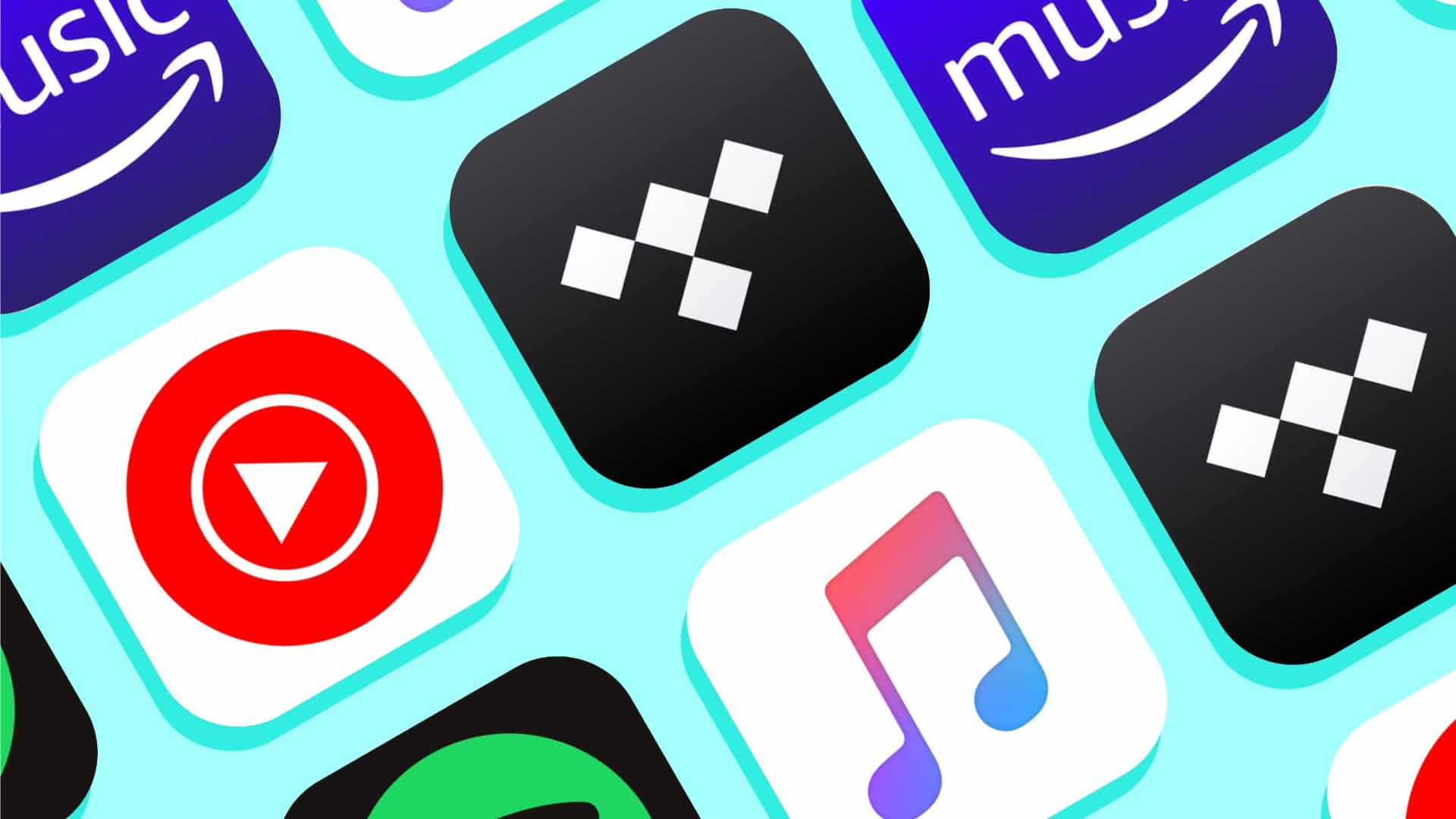The music streaming market reached $47.06 billion in 2025 and is projected to triple to $143.89 billion by 2032, accelerating at 17.3% annually. With over 89% of Americans ages 12+ listening to online audio monthly and 100 million active paid subscriptions in the US, selecting the right platform requires understanding each service’s distinctive strengths, pricing structures, audio quality capabilities, and user experience. The landscape has become increasingly competitive, with each major player offering unique value propositions tailored to different listener preferences.
Market Dominance and User Base
Spotify maintains its position as the global leader with approximately 31% market share and over 500 million monthly active users, including more than 200 million premium subscribers as of 2024. In the United States, Spotify is used by 35% of Americans ages 12+ in a typical month, dominating the competitive landscape. However, the competitive landscape is tightening significantly. In the US, Spotify leads with approximately 50 million paying subscribers overall, yet Apple Music is closing the gap with nearly 42 million subscribers. Apple Music’s particular strength lies in the individual subscriber category, where it surpasses Spotify in the United States.
Apple Music has demonstrated remarkable growth, reaching 112 million users worldwide in 2024 and holding 13% of the global music streaming market share. The platform holds a particularly strong position in North America and leads the family plan market segment, with twice as many family plan subscribers as YouTube Music’s entire US subscriber base.
Amazon Music benefits from its integration with Amazon Prime, maintaining a strong market position particularly among Prime members who receive discounted access. The platform has expanded its subscriber base significantly over the years through strategic bundling and smart home device integration.
YouTube Music offers a distinctive hybrid proposition combining audio and video content, though it has struggled to convert its massive YouTube user base into paid subscriptions compared to competitors that entered the market earlier. Despite this challenge, the platform is rapidly gaining ground and represents a significant growth opportunity.
Pricing Comparison and Value
All major streaming platforms have converged toward similar pricing structures in 2025:
| Service | Individual | Family | Student | Free Tier |
|---|---|---|---|---|
| Spotify | $11.99/month | $16.99/month | $5.99/month | Yes (ad-supported) |
| Apple Music | $10.99/month | $16.99/month | $5.99/month | No |
| Amazon Music Unlimited | $10.99/month ($9.99 for Prime) | $15.99/month | $5.99/month | Yes (with Prime) |
| YouTube Music Premium | $10.99/month | $14.99/month | $4.99/month | Yes (limited) |
| TIDAL | $10.99/month | $16.99/month | $4.99/month | No |
| Deezer | $11.99/month | Family plans available | Student plans available | Yes (limited) |
| Qobuz | $13/month (Studio Premier) | N/A | $5/month | 30-day free trial |
Best Value Recommendations:
For budget-conscious listeners, YouTube Music offers the lowest individual premium price at $10.99, while student discounts at $4.99 monthly provide exceptional value across most services. Prime members receive Amazon Music Unlimited’s deepest discount at $9.99 monthly, making it the best value for existing Prime subscribers. Family plans distribute costs effectively—at $16.99 for six users, family plans cost just $2.83 per person monthly, making them the most economical option for households.
Audio Quality: The Technical Divide
Audio quality has become a critical differentiator in 2025, with significant technical variations between services:
Spotify’s Breakthrough Achievement
After years of delays, Spotify finally launched lossless audio in September 2025. Premium subscribers now access tracks in up to 24-bit/44.1 kHz FLAC format, representing a major quality leap. However, Bluetooth connections cannot support lossless streaming due to bandwidth limitations—users must employ wired headphones or speakers over Wi-Fi for optimal quality. Spotify allows users to configure lossless audio separately for Wi-Fi, cellular, and offline downloads, providing customizable flexibility.
Apple Music’s Consistent Leadership
Apple Music delivers lossless audio (24-bit/192kHz) and hi-res lossless to all subscribers at no extra cost, maintaining its quality advantage over most competitors. The platform introduced this feature in May 2021, years ahead of competitors. Apple Music also provides spatial audio with Dolby Atmos support, delivering immersive surround-sound experiences.
TIDAL’s Audiophile Focus
TIDAL distinguishes itself through comprehensive audio quality options, supporting both FLAC lossless (1,411 kbps) and Master/Hi-Res FLAC (2,304–9,216 kbps) formats. The service also uniquely supports both Spatial Audio and Sony 360 Reality Audio, providing listeners complete control over their sound profile. TIDAL’s lowest quality streams (160 kbps) exceed Apple Music’s lowest quality (128 kbps), ensuring consistent baseline quality.
Amazon Music’s Hi-Res Capabilities
Amazon Music Unlimited offers Ultra HD audio at 24-bit/192kHz, matching Apple Music’s quality. The platform includes spatial audio and Dolby Atmos support, though its integration with Echo devices and smart home systems provides unique value for users in Amazon’s ecosystem.
Qobuz and Deezer’s Niche Strengths
Qobuz specializes in hi-res audio up to 24-bit/192kHz and uniquely offers a download store alongside streaming, making it ideal for listeners who want to purchase lossless tracks. Deezer provides CD-quality lossless streaming (16-bit/44.1kHz) in its HiFi tier alongside Sony 360 Reality Audio for surround-sound experiences.
YouTube Music and Accessibility
YouTube Music streams at maximum 256 kbps AAC quality, lower than most competitors. However, for casual listeners on standard playback systems, this quality difference remains imperceptible to most users.
Feature Differentiation and Unique Strengths
Spotify: Playlist Personalization and Podcast Integration
Spotify’s strongest differentiator remains its unmatched algorithm-driven playlist personalization, particularly the famous Discover Weekly feature. The platform’s integration of podcasts creates a multi-content hub that attracts listeners seeking combined music and talk content. Collaborative playlists enable shared music curation, fostering social engagement. Spotify’s audiobook integration further expands its value proposition for comprehensive audio entertainment.
Apple Music: Ecosystem Integration and Exclusive Content
Apple Music excels for users deeply embedded in Apple’s ecosystem, with seamless integration across iPhone, Mac, iPad, Apple Watch, and Apple TV. The platform features beat-by-beat lyrics with unmatched quality, and an exceptional collection of animated artwork. Apple Music Classical serves classical music enthusiasts with specialized curation and metadata, and Apple Music Sing enables karaoke-style experiences. Local file uploading syncs to cloud storage across all Apple devices, distinguishing it from competitors.
YouTube Music: Video Content and Discovery
YouTube Music’s unique selling proposition combines full music catalog access with music video and live performance content, appealing to visual learners and explorers. This hybrid audio-video approach provides context-rich discovery unmatched by audio-only competitors. Integration with YouTube Premium bundles both platforms, providing value for existing YouTube Premium subscribers.
Amazon Music: Smart Home Integration and Ecosystem Benefits
Amazon Music’s greatest strength lies in its smart home device integration through Alexa voice control and compatibility with Echo devices throughout homes. Prime member benefits include photo storage, free shipping, and video streaming alongside music, creating comprehensive value. Spatial audio capabilities provide immersive listening experiences.
TIDAL: Artist-Centric Model and Sonic Quality
TIDAL differentiates itself through higher artist royalty payments compared to competitors, paying approximately $0.0076 per stream compared to Spotify’s $0.0071. The platform’s focus on high-fidelity sound quality appeals to audiophiles and serious music listeners. DJ Extension add-on capabilities cater to music professionals and enthusiasts.
Deezer: Community Features and Music Discovery
Deezer emphasizes community engagement through music quizzes, SongCatcher song identification technology, and Flow personalized playlists. Lyrics with translations support multilingual listening experiences, particularly appealing to international audiences. The platform combines personality-driven discovery with social features.
Qobuz: Audiophile Experience and Purchase Options
Qobuz’s clean, intuitive application interface makes navigating its hi-res catalog straightforward. The streaming service’s integrated download store enables purchasing lossless tracks at discounts for Sublime Plus subscribers. Qobuz Connect enables streaming from the app to compatible hi-fi equipment, bridging streaming and dedicated audio systems.
User Experience and Interface Design
Music streaming apps prioritize user-centric design employing principles of minimalism, personalization, and intuitive navigation. Successful implementations focus on efficient discovery mechanisms through search functionality, personalized recommendations leveraging machine learning algorithms, and playback controls positioned prominently for accessibility. Social integration features enable sharing and collaborative playlist creation, fostering community engagement.
Spotify is widely regarded as having the most intuitive and user-friendly interface, offering best-in-class usability. Apple Music integrates seamlessly with iOS design language but faces criticism for its Windows app quality and limited non-Apple device compatibility. Qobuz users praise its clean, engaging interface design. YouTube Music’s interface remains intuitive despite being newer than competitors.
Emerging Alternatives and Artist-Focused Platforms
SoundOn: Distribution and Artist Empowerment
SoundOn, founded by TikTok in 2021, represents a new category of artist-focused platforms combining distribution with promotional support. Artists retain complete copyright ownership while receiving 100% of royalties in year one and 90% thereafter. The platform’s integration with TikTok’s creator ecosystem and partnerships with CapCut provide unprecedented viral potential for emerging artists. Available in the US, UK, Australia, Brazil, Indonesia, and New Zealand, SoundOn targets independent musicians seeking fair compensation and audience development support.
SoundCloud: Independent Artist Focus
SoundCloud distinguishes itself through support for over 400 million tracks from independent artists and emerging talent, emphasizing user-uploaded music, remixes, and community engagement. The platform prioritizes connecting listeners directly with creators while fostering independent artistry.
Pandora: Radio-Style Listening
Pandora maintains a dedicated audience preferring radio-style listening over on-demand streaming, though its user base continues shrinking as on-demand services dominate.
Choosing the Right Service for Your Needs
For General Listeners: Spotify offers the best overall combination of personalization, social features, podcast integration, and newly-launched lossless audio quality at standard pricing.
For Apple Ecosystem Users: Apple Music provides seamless integration, superior lossless audio, and iOS-optimized experience that justifies selection based on ecosystem convenience.
For Prime Members: Amazon Music Unlimited delivers exceptional value through Prime membership discount, alongside smart home integration and high-quality audio capabilities.
For Budget-Conscious Listeners: YouTube Music offers the lowest individual premium price and exceptional family plan value at $14.99 for six users, combining music with video content.
For Audiophiles: TIDAL provides the most comprehensive high-fidelity experience with multiple quality tiers, Spatial Audio, and Sony 360 support, while Qobuz offers hi-res downloads and audiophile-focused curation.
For Video Enthusiasts: YouTube Music uniquely combines audio with music videos and live performances, appealing to visual learners.
For Independent Artists and Listeners: SoundOn enables artists to reach global audiences while retaining copyright and receiving fair compensation, while SoundCloud directly supports independent creators.
The Future of Music Streaming
The industry is experiencing rapid convergence in pricing and catalog size, with differentiation increasingly driven by audio quality, user experience, and unique feature ecosystems. High-fidelity and lossless streaming are becoming baseline expectations rather than premium differentiators. AI-driven personalization continues evolving, live audio and virtual concerts emerge as growth opportunities, and subscription bundling with complementary services (video, podcasts, cloud storage) remains a key competitive strategy.
The global music streaming market is expected to reach $66.62 billion by 2029, with Asia Pacific experiencing the fastest growth due to expansion into emerging markets like India and China. However, trade tariffs and macroeconomic factors may moderate growth slightly from previous projections. Streaming dominance is undeniable—with 84% of US music industry revenue now generated through streaming, listeners and artists alike depend on these platforms as the primary music distribution and discovery mechanism.




